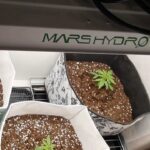How to Use Vinegar and Baking Soda to Increase and Decrease PH in Soil
| thcscout | Baking | No Comments on How to Use Vinegar and Baking Soda to Increase and Decrease PH in Soil
Share
- No bookmark found
1Test the pH of soil by using a pH meter or a pH test kit. Both come with instructions, but generally, add 1 tbsp. of soil to a cup, add distilled water and stir. Insert the meter’s prong or the test’s litmus paper strip into the soil. The meter or litmus strip will provide a pH reading.
2 Conduct a homemade version of a pH test if you do not have access to a pH meter or kit. Collect two soil samples from the same area. Add distilled water to each and stir. Add 1 tbsp. of vinegar to the first and 1 tbsp. of baking soda to the other. If the cup with vinegar added starts to fizz and bubble, the soil is alkaline, since vinegar is acidic with a pH of 3.3. If the soil with the baking soda bubbles, the soil is acidic, since baking soda is alkaline with a pH of 8.2.
3 Add vinegar to your soil if you need to lower the pH or make the soil more acidic. Mix 1 gallon of water with 1 cup of vinegar. Pour the solution around the base of plants in the soil you are adjusting.
4Add baking soda to the soil if you need to raise the pH or make the soil more alkaline. Mix 1 tbsp. of baking soda with 1 gallon of water and stir. Apply the solution to your soil.
5Test your soil the next day and regularly to monitor pH levels.











